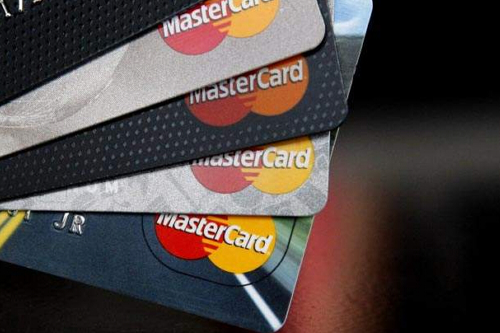8 Simple Rules for Using Your Debit Card in Europe
Latoya Irby
If you’re a U.S. citizen planning a trip to Europe in the near future, it’s essential to know the rules for using your debit card in Europe. You want to be sure you can continue to access your funds while you’re on the trip and avoid having your account flagged as fraud.
Check the network before you travel. If you have a debit card with a Visa or MasterCard logo, you should have a pretty easy time using your debit card in Europe.
Your debit card will also have the symbol of a debit card network like PLUS, Cirrus, or Maestro. When you’re using your debit card at an ATM – which is the best way to get cash when you’re traveling in Europe – check for these symbols to be sure your card is compatible.
Let your bank know you’re traveling. Before you head out, give your bank a quick call to let them know you’ll be traveling out of the country. Give them the date of your departure and your return so your bank won’t put a hold on your debit card. Otherwise, your bank may automatically flag your international transactions as fraudulent, which could be a hassle to deal with. Keep in mind that there can be a time difference up to 10 hours between countries in Eastern Europe and the Western United States, which can make it difficult to contact your bank during business hours.
Confirm the international transaction fees you’ll pay. While you have your bank on the phone, it’s helpful to find out the fees you’ll be charged for using your debit card in Europe both for purchases and for withdrawing cash from the ATM.
Most banks charge a fee for converting your transaction to another currency. The Euro is most widely used throughout Europe, but a few other countries have their own currency like the British Pound or the Swiss Franc. You may pay a flat fee or a percentage of the transaction. You’ll need to factor in these foreign transaction fees into your budget so you won’t run out of funds.

Using a debit card that’s great for international travel can help you save on fees.
Check your daily cash withdrawal limit. You’ll want to carry a certain amount of cash with you just in case you’re traveling in places that don’t accept debit cards or you want to avoid paying currency exchange fees on each transaction. Check your current daily cash withdrawal limit to confirm it’s high enough for the amount you may withdraw each day. If not, ask your bank to raise your withdrawal limit while you’re on the trip. You can lower the limit again once you’re back home.
Make sure you have a four-digit PIN. ATMs in Europe won’t accept a PIN longer or shorter than four digits, so make sure you have your PIN set correctly before you depart on your trip. While you can withdraw cash from an ATM using a credit card, it’s better to use your debit card since a credit card cash advance is more expensive.
Pay for purchases in local currency. Some merchants may ask if you want to pay for your purchase in U.S. Dollars. While it might be easier for you to do the math this way, it’s typically more expensive. The merchants essentially charge their own exchange rate which may be much higher than what your bank charges you.
You can download an exchange rate calculator app to your phone so you can quickly make currency conversions.
Bring a backup credit or debit card. You don’t want to be stuck in Europe without a second source of funding. Bring another credit or debit card with you. Make sure you call that bank before traveling as well and check the fees and daily withdrawal limits. Don’t carry the two cards with you at the same time. Leave one where you’re staying so that if your primary debit card is lost or stolen you won’t be without a payment. If you’re uncomfortable leaving your second card at your hotel or Airbnb, carry it on your person, but separately from your main credit card. For example, you might carry one card in your wallet and another in your shoe.
Be aware of debit card fraud protection laws.
While using your debit card means you’re not creating a credit card balance, it may be riskier. If your debit card is lost or stolen, you have two business days to report it to the bank. This limits your liability for any fraudulent charges to just $50. After that, you could be liable for $500 or your entire balance if it takes you 60 days or more to report your missing card. A missing debit card puts your entire balance at risk-the money you’ve earned and deposited into your checking account.
With a credit card, you’re only liable for a maximum of $50 in fraudulent charges once your card goes missing. And it’s your credit limit that’s at risk, not your bank account balance. That doesn’t mean you can’t use your debit card; just be extra protective since your money is at risk if you lose your card.
Fortunately, the banking system in Europe is not dramatically different from that of the United States. Practicing these simple rules for using your debit card in Europe will keep your debit card usable and protect the funds in your bank account.








